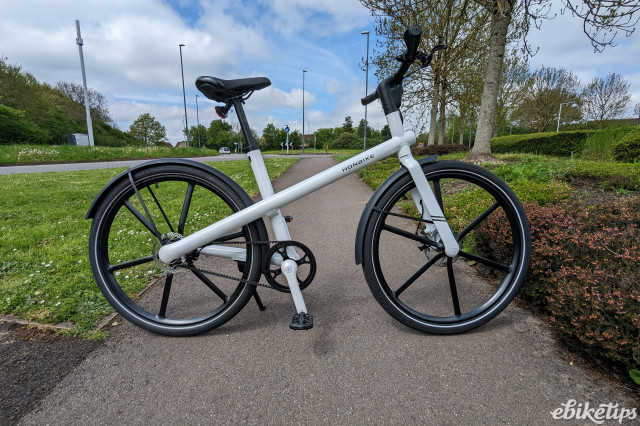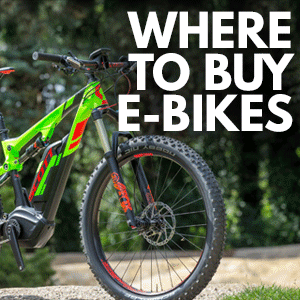Review: First Ride: Pulse ZL-2

Overview
- Motor is good and quiet
- Decent range from the 320Wh battery
- Comfortable ride
- Gear shifter is awful
- mode change on the display is confusing
- Suspension fork isn't adding anything except weight
Pulse bikes come from the same stable as EBCO, and as the EBCO bikes move a bit upmarket – they now start at £1,299 and all feature computer diagnostics – it's left a gap which Pulse is designed to fill. The range starts with the £799 ZL-2 (a diamond-frame ZR-2 is also available with the same spec) and like the EBCO UCR-10 it (sort of) replaces it's testament to how much you can get for less than a grand these days.
The ZL-2 isn't doing anything particularly special, and it's not a match in terms of performance for some bikes at the higher price points. But what it does offer is a decent ride, valuable assistance and a good quality motor and battery. Because of that, it's easy to recommend if you don't have much to spend.
The motor in question is a 250W TranzX rear hub, mated to a 7-speed Shimano drivetrain. It's the same as (or very similar to) the motor that EBCO used for the £999 UCR-10 (albeit at the back rather than the front) and there aren't any significant component downgrades anywhere else, so overall the bike looks like a bit of a bargain in comparison.
One of the possible reasons for the move to the rear hub is that the ZL-2 has a suspension fork up front, and the extra mass of a motor can make cheap telescopic forks flex unnervingly. The UCR-10 had a rigid fork and was a better bike for it.
The battery is a 320Wh rack-mounted unit. That's going to have enough range for commuting and town duties; it'll struggle with longer rides but it's unlikely you'd be buying the ZL-2 with any epic journeys in mind. For commutes of up to 10 miles, or shorter, hillier rides, you'll easily get back home on a single charge. If you're using the bike for flatter, shorter journeys then a charge will probably last all week.
The bar mounted display is simple enough: you get one button to change the assistance mode, and one to turn the integrated lights on and off. Oddly the mode change goes low to high and then back down again, meaning if you're in the middle assistance mode of the three then you never know whether you're going to get a boost or slow down. It'd be better if it just went in one direction. The buttons aren't huge but they're fairly easy to find and press.
The overall look of the bike is good: the cables are routed internally, and the bike looks nice and clean with fairly minimal graphics.
The seven speed transmission uses a shimano derailleur at the back and a Microshift twist shifter, which was definitely a low point of the bike. It was very stiff and vague, and if you had a weak grip I think you'd genuinely struggle to change gear. It's possible it would loosen up over time, or a change of cable would help. I wasn't impressed though.
The ride, on the other hand, is good. The bike feels pretty well balanced, although the fact that the motor and battery are both at the back can make the steering feel a bit light, especially on climbs. The fact that the motor and battery weight and the ride position put a lot of weight through the saddle and the rear wheel means that the front suspension fork is pretty redundant; most of the time it's probably not doing anything the big-chamber tyres couldn't cope with. The wide and swept handlebars also have plenty of give, and offer a good position for leisurely riding. There's no adjustable stem here but two frame sizes are available to get the fit right.
Power application from the cadence sensor is good. There's the usual lag that you get with a cadence system away from a standstill but it's no worse than other bikes I've tried with a similar motor. The bike doesn't measure torque so simply spinning the pedals slowly is enough to keep the motor engaged, which means you can cruise along on the flat under motor power only. The three motor modes are distinct and offer a good range of assistance.
The bike feels capable and the gear range was enough for me, although it's not the widest: if you're heavy, or not very fit, or you have any musculo-skeletal issues delivering power to the pedals then it's entirely possible that the lowest gear wouldn't be low enough. There is scope to change the front chainring to something smaller, although it might also necessitate a smaller chainguard.
Overall, though, I was impressed. At £799 you're not expecting miracles, just a decent bike with workable motor and kit, and the Pulse easily exceeds those expectations. It's really good value at this price: The gearing will be to narrow for some and the twist shifter for the gears is awful, but overall it was a better experience than I was expecting with an easy, comfortable ride and smooth, quiet power delivery. You're getting the full package too: integrated lights, mudguards, kickstand and a chainguard, everything you need for city riding. If you're buying on cycle to work or you just have a low budget, it's a very well-specced machine for the money.
1 comments
Hi Dave,
Really helpful review! We were thinking of getting this bike, but needed to fit a child bike seat (hamax siesta) to the pannier rack. We can't find anywhere with clarity on the weight limit of the Pulse ZL-2 rack, is this something you, by some miracle, know?
BW
Kush












